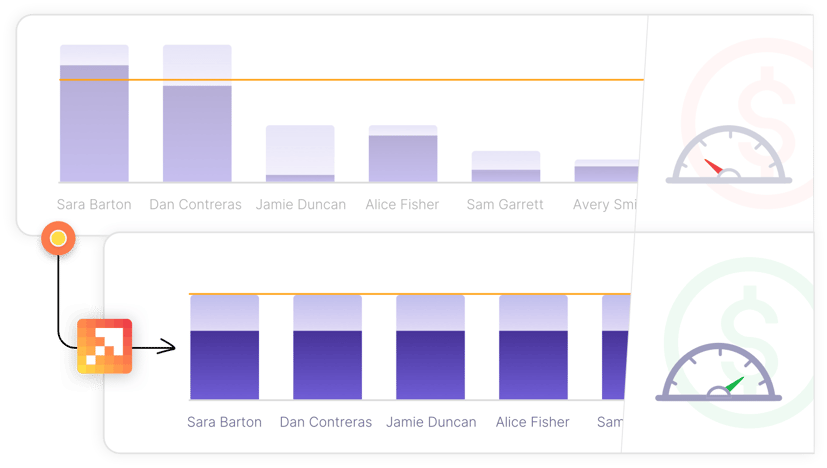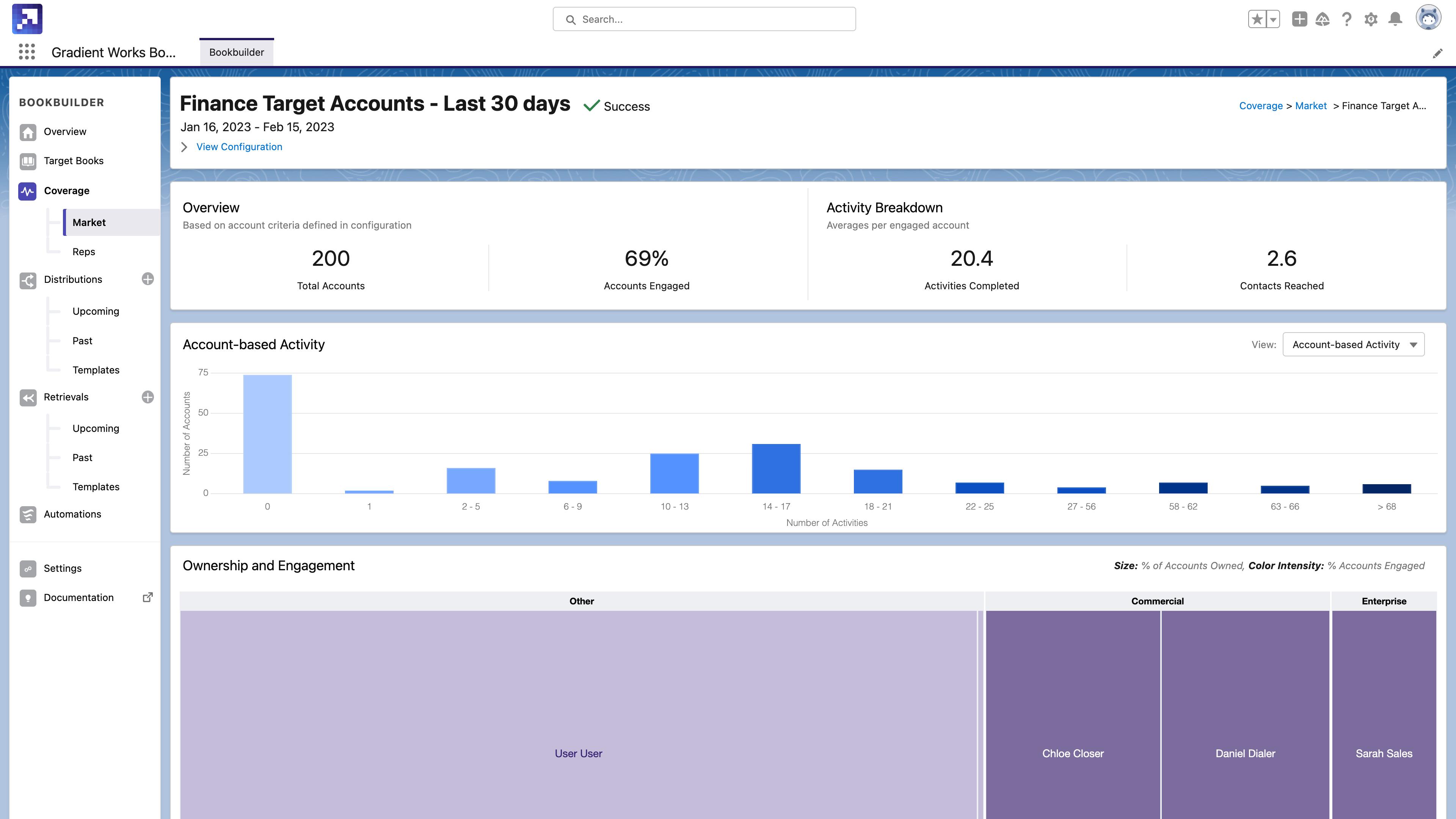So you’ve lost a handful of reps, either via RIF, promotion, or other forces. No matter the reason, you now have to redistribute those reps’ accounts, and there may be a lot of them. You can shrink the list of accounts you need to distribute by prioritizing key accounts.
However, depending on the territory model you follow, you may find yourself with empty territories or accounts that don’t make sense being reallocated to another rep in a different territory. Review these reallocation options to get your sales team back on track.
Redistribute accounts by quota/ARR loss
ARR is most sales leaders’ love language, so you could start with the accounts that will be the biggest ARR or quota attainment loss. But in a geographic territory model, you may immediately create unfair and uneven distributions.
Opportunity is not distributed geographically. If the best accounts are all on the west coast, SaaS in San Francisco for example, you may create a territory too big for one person to appropriately work. Over-capacity reps are one of the biggest reasons for lost revenue as opportunities and accounts slip through the cracks. If a rep can’t get to the new accounts, it’s no different than just not reassigning them at all.
If your territories are based on named accounts or verticals, the reallocation could still be drastically uneven. One rep might get one or two large accounts and another might get eight smaller ARR accounts based on their territory. Both prove troublesome when you look at a rep’s existing capacity.
The best solution is to dynamically redistribute accounts based on ARR and deal size but limit the number you assign to each rep, and prioritize with intent data and account scoring. Between a market coverage and rep report. You can identify the accounts and reps available to take on new accounts and redistribute them in a few clicks.

Redistribute by location
Redistributing by location is the default assignment after losing reps for a traditional geographic territory model. If an account is drivable, travelable, or callable without waking up at 4am, then that rep gets it. You may split a former territory into new smaller sections and redistribute those, or assign a new rep to an existing territory. This method does not consider ARR, rep capacity, or any other metric. The goal is to get the accounts into a new book so that they can get worked. But you may end up expanding existing reps’ “patches”, creating a capacity nightmare.
In a vertical or named accounts model, focusing on location creates significant issues for your reps. They may not be familiar with the new vertical/accounts/industry assigned. They will spend a lot of time researching and training to create effective outreach. From a sales engagement perspective, reps will have less targeted communications and could revert to spray and pray tactics.
In a dynamic books model, location doesn’t really matter. However, many sales leaders will try to match up account distribution with time zones or general regions for ease of communication. Instead, distribute accounts that are within the rep’s ability, knowledge base, and capacity.
Redistribute dynamically
Every company has its own unique variables. No matter your ICP and GTM plan, dynamic allocation puts the best accounts with the reps with available capacity. The unique flexibility removes the need to re-carve a map with every change in personnel, reduces rep overload and burnout, and increases fairness. Other accounts not able to be worked go back to the pool and are not collecting dust in someone’s name.
Dynamic book allocation is an alternative to static territories that relies on flexible books instead of fixed territories. Every rep is assigned a book of accounts, based on account fit and in-market timing, as well as the rep’s available capacity. A dynamic approach doesn't pre-carve your universe of accounts into territories, and instead continuously distributes the best available accounts to a rep who can work it.
Losing sales reps can be a challenging situation for any company. However, by implementing effective strategies for redoing territories dynamically, businesses can minimize the negative impact and continue to thrive.




